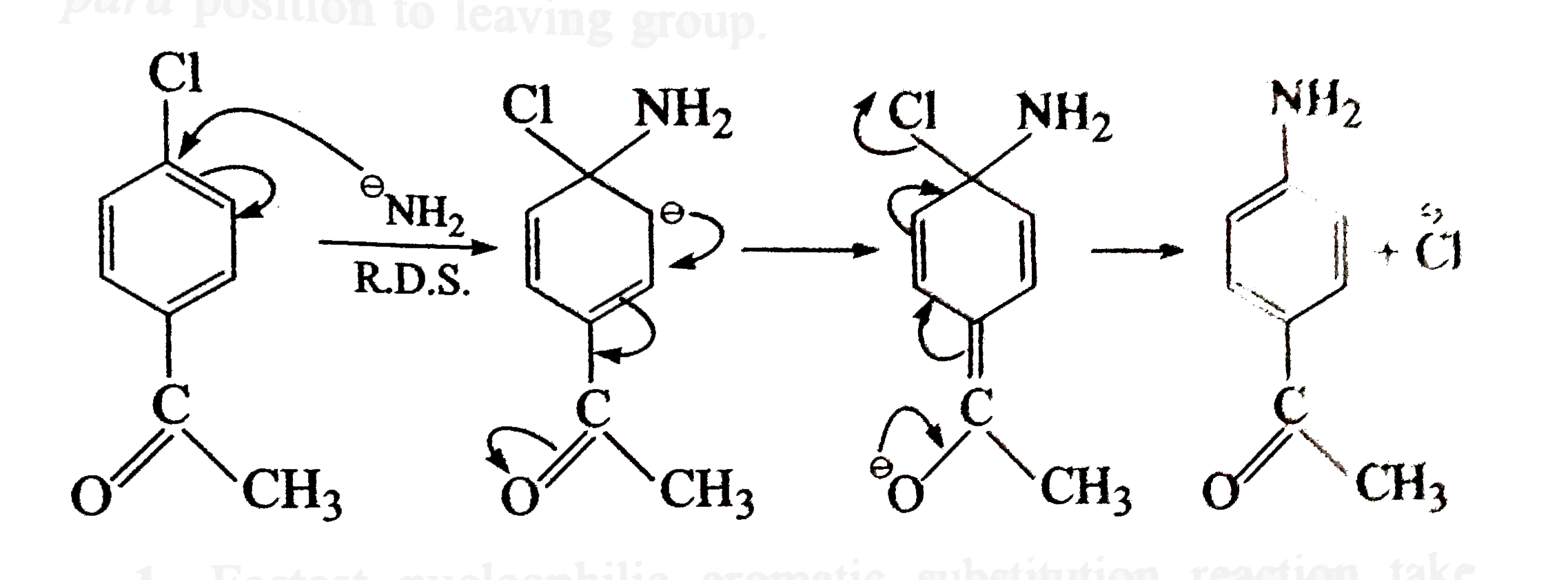Although chlorine is an electron withdrawing group, yet it is ortho-, para- directing in electrophilic aromatic substitution reactions. Why?
Chlorine is an electron withdrawing group and has -I (inductive) effect. Therefore, it withdraws electrons from the benzene ring and tends to destabilize the intermediate carbocation formed during the electrophilic substitution reaction. The intermediate carbocations for ortho- and para-attacks are shown below :

However, the lone pairs of electrons on the chlorine atom stabilise the intermediate carbocation due to resonance :

Since -I effect of Cl is stronger than its +R effect, therefore, causes electron withdrawal and this causes net deactivation. The resonance effect tends to oppose the inductive effect for attack at ortho and para position and hence makes deactivation less for ortho-and para-attack. Thus, we can say that the reactivity is controlled by the stronger inductive effect and orientation is controlled by the resonance effect. Thus, although chlorobenzene is less reactive than benzene but it is ortho, para directing in electrophilie substitution reaction.
Topper's Solved these Questions
- HALOALKANES AND HALOARENESBook:MODERN PUBLICATIONChapter:HALOALKANES AND HALOARENESExercise:PRACTICE PROBLEMS
Explore 30 Videos
- HALOALKANES AND HALOARENESBook:MODERN PUBLICATIONChapter:HALOALKANES AND HALOARENESExercise:CONCEPTUAL QUESTIONS
Explore 25 Videos
- GENERAL PRINCIPLES AND PROCESSES OF ISOLATION OF ELEMENTSBook:MODERN PUBLICATIONChapter:GENERAL PRINCIPLES AND PROCESSES OF ISOLATION OF ELEMENTSExercise:COMPETION FILE (Integer Type Numerical Value Type Questions)
Explore 5 Videos
- ORGANIC COMPOUNDS CONTAINING NITROGEN Book:MODERN PUBLICATIONChapter:ORGANIC COMPOUNDS CONTAINING NITROGEN Exercise:UNIT PRACTICE TEST
Explore 5 Videos
Similar Questions
Although chlorine is an electron withdrawing group, yet it is ortho-, para- directing in electrophilic aromatic substitution reactions. Why?
View Solution(i). Why are alkyl halides insoluble in water. ?
(ii). Although chlorine is an electron withdrawing group, yet it is ortho and para directing in electrophilic aromatic substitution.
View Solution
Knowledge Check
For an electrophilic aromatic substitution reaction
AChlorine is o-p directing group and also electron releasing groupBChlorine is o-p directing group and also electron withdrawing groupCChlorine is meta directing group and also electron releasing groupDChlorine is meta directing group and also electron withdrawing groupWhich of the following is not a meta-directing group in electrophilic aromatic substitution?
A−SO3HB−COOHC−CND−NH2This section contains Assertion and Reason type questions. Each question has 4 choices (1), (2), (3) and (4), out of which only one ts correct.
Assertion (A) Chlorine is an ortho para directing in electrophilic aromatic substitution reaction.
Reason (R) Chlorine is an electron withdrawing group.ABoth Assertion and Reason are correct and Reason Is the correct explanation of the AssertionBBoth Assertion and Reason are correct but Reasan Is not the correct explanation of AssertionCAssertion Is correct but Reason is IncorrectDBoth Assertion and Reason are incorrect
Introduction OF Electrophilic Aromatic Substitution Reaction
View SolutionHalogens are deactivating yet ortho,para directing in electrophilic aromatic substitution. Which statements do not explain this ?
View SolutionFor a typical nucleophilic aromatic substitution reaction to take place .
1. Nucleophilic atom should be of oxygen nitrogen or sulphur.
2. Leaving groups should be halide.
3. There should be strong electron withdrawing at ortho and para position to leaving group.

Fastest nucleophilic aromatic substitution reaction take place in :
View SolutionWhich of the following stes of groups activates the ortho and para positions in electrophilic aromatic substitutions ?
View SolutionFor a typical nucleophilic aromatic subsitution reaction to take place.
(1) Nucleophilic atom should be of oxygen, nitrogen or sulphur.
(2) Leaving group should be halide .
(3) There should be strong electron withdarwing at ortho and para position to leaving group.

Fastest nucleophilic aromatic substitution reaction take place in :
View Solution